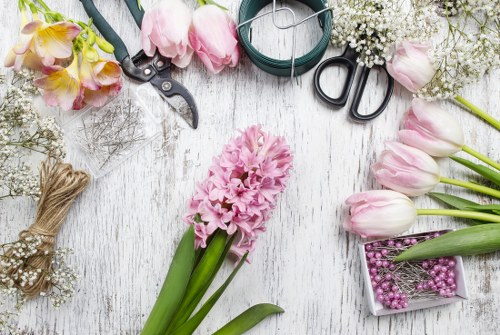Why People in Fleet Choose Send Flowers
- Trusted Locally – Thousands of Fleet Bouquets Delivered Each Year
- Same-Day & Next-Day Delivery Across Fleet
- 4.9★ Feedback from Real Fleet Customers
- Fresh Morning Market Stems Selected Just for Fleet Orders
- Hand-Crafted Arrangements by Professional Florists
- Guaranteed On-Time Arrival for Homes, Offices & Events
- Love-It-or-Replace-It Policy on All Fleet Deliveries
- Planet-Friendly Packaging to Reduce Local Waste
- Safe & Secure Checkout with Full Data Protection
- Clear, Fair Pricing – No Unexpected Fees
- Friendly Customer Support 7 Days a Week
- Working to the Standards of UK Floristry Best Practices
Flower Delivery Fleet: Ensuring Freshness and Reliability
When it comes to sending beautiful blooms to your loved ones, a reliable flower delivery fleet is essential. These fleets ensure that every bouquet arrives fresh and on time, no matter the distance.
A flower delivery fleet comprises a group of vehicles and drivers dedicated to transporting flowers from florists to customers. The fleet's efficiency directly impacts the quality of the flowers upon arrival.
Managing a flower delivery fleet involves careful planning and coordination. This includes selecting the right vehicles, training drivers, and optimizing delivery routes to minimize delays.
The Importance of a Dedicated Delivery Fleet

A dedicated flower delivery fleet offers several advantages over standard delivery services. Firstly, specialized vehicles are equipped to handle delicate flowers, preventing damage during transit.
Secondly, trained drivers understand the importance of timely deliveries, especially for occasions like weddings, anniversaries, and funerals where timing is crucial.
Moreover, having a dedicated fleet allows for better tracking and management of deliveries, ensuring that each order is fulfilled accurately.
Types of Vehicles Used in Flower Delivery

Flower delivery fleets utilize a variety of vehicles, each suited for different needs. Common choices include vans, trucks, and even motorcycles in urban areas where traffic congestion is a concern.
Vans are popular for their ample space and ability to maintain a consistent temperature, which is vital for preserving flower freshness.
Motorcycles and smaller vehicles are used for quick deliveries in busy city centers, allowing drivers to navigate through traffic more efficiently.
Optimizing Delivery Routes

Efficient route planning is crucial for a successful flower delivery fleet. Utilizing GPS and routing software helps drivers find the fastest and safest paths to their destinations.
Optimized routes reduce fuel consumption, lower operational costs, and ensure that flowers are delivered promptly, maintaining their quality.
Additionally, real-time traffic updates allow delivery managers to adjust routes on the fly, avoiding delays caused by unexpected road closures or accidents.
Maintaining Flower Quality

Maintaining flower quality during transport is a top priority for any delivery fleet. This involves controlling the vehicle’s temperature and ensuring that flowers are securely packaged to prevent damage.
Temperature-controlled vehicles help in preserving the freshness of flowers, especially in extreme weather conditions. Proper ventilation within the vehicle ensures that flowers remain hydrated and vibrant.
Secure packaging prevents flowers from being crushed or bruised during transit, ensuring that they reach the customer in perfect condition.
Technology in Flower Delivery Fleets
Modern flower delivery fleets leverage technology to enhance their operations. From advanced tracking systems to automated inventory management, technology plays a significant role in improving efficiency.
Fleet management software allows companies to monitor the location and status of each vehicle in real-time, providing transparency and accountability. This ensures that customers are always informed about the status of their deliveries.
Automated inventory systems help in managing stock levels, ensuring that florists always have the necessary flowers and supplies to fulfill orders promptly.
Customer Satisfaction and Feedback
Customer satisfaction is paramount in the flower delivery business. A reliable fleet ensures timely deliveries, which is a key factor in customer satisfaction.
Collecting and analyzing customer feedback helps fleets identify areas for improvement. This can lead to better service quality and increased customer loyalty.
Offering options like real-time delivery tracking and flexible delivery times can enhance the customer experience, making the service more personalized and reliable.
Local Relevance: Flower Delivery in and around Fleet
For those in Fleet and surrounding areas, having a robust flower delivery fleet means local florists can compete effectively. Let's take a closer look at the nearby areas served by Fleet's flower delivery services.
Nearby Areas Near Fleet

- Gosport: Just a short drive from Fleet, Gosport enjoys quick and efficient flower deliveries, perfect for last-minute gifts.
- Havant: Known for its vibrant communities, Havant benefits from regular and reliable flower deliveries.
- Stubbington: With its picturesque settings, Stubbington ensures that flowers arrive fresh and beautiful.
- Fareham: Serving Fareham means catering to a diverse clientele with varied floral needs.
- Southsea: Coastal Southsea requires specialized delivery schedules to accommodate its busy tourism seasons.
- Sparsholt: Sparsholt's residential areas are well-covered by Fleet's delivery routes.
- Alverstoke: Alverstoke's historic charm is complemented by timely flower deliveries for local events.
- Hedge End: As a key area, Hedge End enjoys frequent and dependable flower delivery services.
- Barton-on-Sea: The seaside beauty of Barton-on-Sea is matched by the freshness of flower deliveries.
- Hayling Island: Serving Hayling Island involves coordinating with local florists to ensure timely deliveries.
Challenges Faced by Flower Delivery Fleets

Operating a flower delivery fleet comes with its own set of challenges. Weather conditions, traffic congestion, and maintaining flower quality during transit are some of the main issues.
Adverse weather can damage flowers and delay deliveries, making it essential for fleets to have contingency plans in place.
Traffic congestion, especially in urban areas, can cause delays and affect the freshness of the flowers upon arrival.
Overcoming Delivery Challenges

To overcome these challenges, flower delivery fleets invest in sturdy, climate-controlled vehicles and advanced route planning software.
Training drivers to handle flowers with care and providing them with the tools to navigate traffic efficiently also helps in maintaining service quality.
Additionally, having a robust support system to handle unexpected issues ensures that deliveries remain on track despite any hurdles.
Sustainability in Flower Delivery Fleets

Sustainability is becoming increasingly important in the flower delivery industry. Fleets are adopting eco-friendly practices to reduce their environmental footprint.
Using electric or hybrid vehicles helps in lowering carbon emissions, contributing to a healthier environment.
Implementing recycling programs for packaging materials and using biodegradable containers also support sustainable operations.
The Future of Flower Delivery Fleets

The future of flower delivery fleets lies in embracing new technologies and sustainable practices. Innovations like drone deliveries and AI-powered route optimization are on the horizon.
These advancements promise faster, more efficient deliveries while minimizing environmental impact.
As the industry evolves, flower delivery fleets will continue to play a crucial role in bringing joy and beauty through flowers to communities everywhere.
Conclusion
A well-managed flower delivery fleet is essential for ensuring that every bouquet reaches its destination fresh and on time. By investing in the right vehicles, technology, and sustainable practices, flower delivery services can meet the growing demands of customers.
Whether you're sending a single stem or a grand arrangement, knowing that a reliable fleet is handling your delivery brings peace of mind and ensures that your gesture is beautifully received.
Frequently Asked Questions
1. How do flower delivery fleets ensure the freshness of flowers?
Flower delivery fleets use temperature-controlled vehicles and secure packaging to maintain the freshness of flowers during transit. Proper ventilation and hydration methods are also employed to keep flowers vibrant.
2. What types of vehicles are commonly used in flower delivery fleets?
Common vehicles include vans, trucks, and motorcycles. Vans and trucks are preferred for their space and temperature control, while motorcycles are used for quick deliveries in congested urban areas.
3. How are delivery routes optimized for efficiency?
Delivery routes are optimized using GPS and routing software that considers traffic patterns, delivery locations, and real-time traffic data to find the quickest and most efficient paths.
4. Can flower delivery fleets accommodate last-minute orders?
Yes, many flower delivery fleets are equipped to handle last-minute orders by maintaining flexible schedules and having efficient processes to ensure timely deliveries.
5. What sustainable practices are adopted by flower delivery fleets?
Fleets adopt sustainable practices such as using electric or hybrid vehicles, implementing recycling programs for packaging, and using biodegradable containers to reduce their environmental impact.
